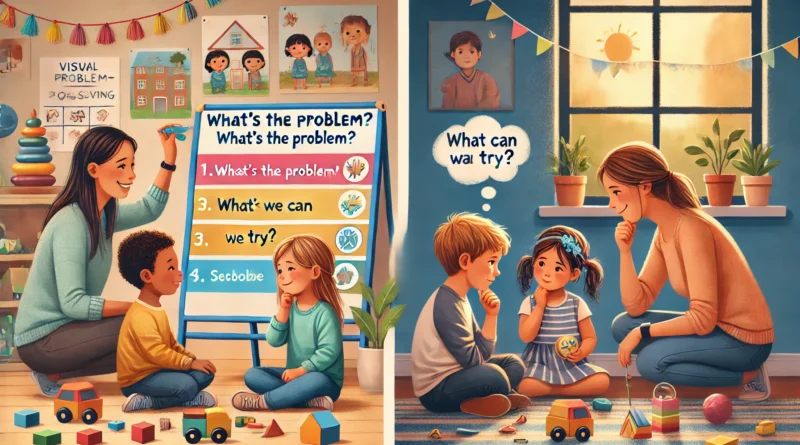How to Teach Young Children About Problem Solving with Others
Learning to solve problems with others is a skill that helps children build strong friendships and navigate challenges peacefully. Whether it’s figuring out how to share a toy or deciding what game to play, problem-solving teaches kids how to listen, cooperate, and compromise. With practice and guidance, even young children can become thoughtful team players and kind conflict-solvers.
Why Social Problem Solving Matters
- Improves communication and empathy
- Reduces conflict and frustration
- Strengthens peer relationships
- Builds emotional regulation and patience
- Promotes fairness and collaboration
Option 1: Teach a Simple Problem-Solving Strategy
Activity Idea:
Use a 4-step visual strategy to guide your child:
- What’s the problem?
- How do we feel?
- What are some ideas to solve it?
- What can we try first?
Use puppets or toys to role-play common problems like sharing, turn-taking, or choosing a game.
What Kids Learn:
- That problems are normal and solvable
- How to express feelings and ideas
- Steps to handle disagreements calmly
Tool Suggestion:
Make a poster with pictures for each step and hang it in a common area.
Option 2: Practice with Real-Life Scenarios
Activity Idea:
When conflicts come up (e.g., two kids want the same toy), guide them through resolving it together:
- “Can you think of a way to take turns?”
- “What could we try so both people feel okay?”
Avoid solving it for them—coach from the side and praise efforts.
What Kids Learn:
- Responsibility for actions and outcomes
- Listening and compromise
- Confidence in managing social challenges
Book Suggestion:
I Can Work It Out by Cheri J. Meiners — teaches young children strategies for resolving conflicts respectfully.
Other Tips to Strengthen Problem-Solving with Others
- Model respectful disagreement: “We had different ideas, so we made a plan together.”
- Use pretend play: Create scenarios with dolls or action figures to solve problems cooperatively.
- Celebrate teamwork: “You both worked that out so kindly!”
- Encourage perspective-taking: “How do you think your friend felt when that happened?”
Final Thoughts
Problem-solving with others helps children become compassionate, capable members of their communities. With clear steps, role-playing, and support during real moments, your child can learn to face challenges—not with frustration, but with curiosity and kindness. These early lessons lay the groundwork for cooperation, confidence, and connection for years to come.
